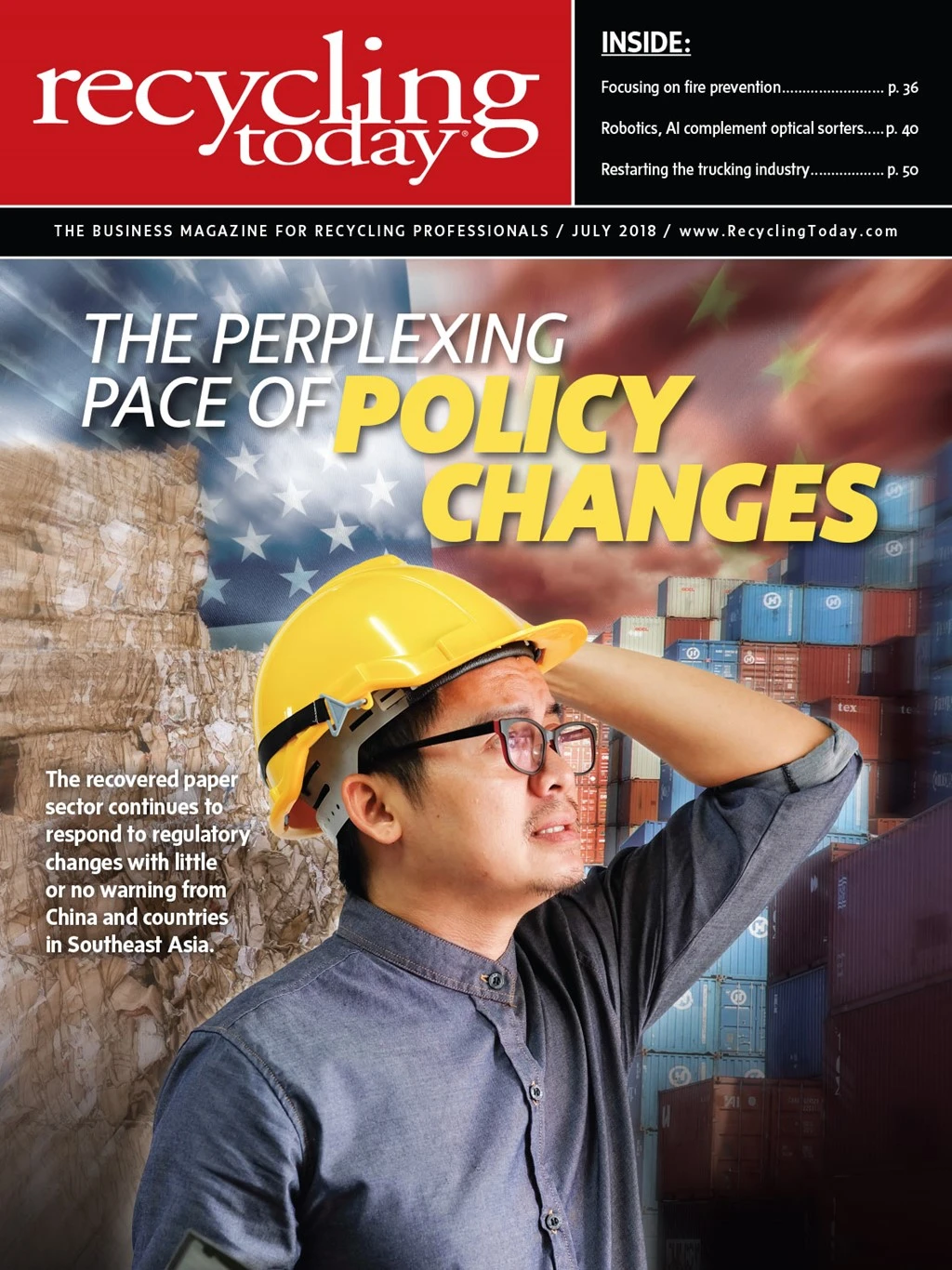The government of China’s moves to ban the importation of most types of plastic scrap remain the foremost factor in the health of the global plastic recycling sector, according to presenters at the Plastics Committee meeting of the Brussels-based Bureau of International Recycling (BIR). The committee met in late May in Barcelona, Spain, at the 2018 BIR World Recycling Convention & Exhibition.
Committee member Steve Wong of Hong Kong-based Fukutomi Co. Ltd., who also helps lead the China Scrap Plastic Association, noted that China used to bring in as many as 7 million metric tons per year of plastic scrap. But that flow has been reduced to a trickle in 2017 and 2018.
The import ban has been enacted to boost China’s domestic recycling industry. Wong said only 2 percent of the nation’s postconsumer plastic packaging is recycled and the country’s overall plastics recycling rate is estimated to be just 14.

While recyclers have increased their shipments to other Asian countries, including Malaysia, Thailand and Vietnam, Wong said those nations cannot absorb the 7 million metric tons per year that previously had been shipped to China. Making matters worse, their governments have begun to emulate China’s scrutiny of such shipments.
BIR Plastics Committee Chair Surendra Patawari Borad of Antwerp, Belgium-based Gemini Corp. N.V. said, “Indian imports will grow, but [from] a very small baseline figure.” Polyethylene terephthalate (PET) scrap imports into India have grown from 3,000 metric tons to 12,000 metric tons per month, he said, but the “main stumbling block is the difficulty in getting import licenses.” Only 35 firms have such licenses, and new ones have not been issued since 2015.
Borad, in reading a U.S. market report prepared in cooperation with Sally Haughton of Plastic Recycling Corp. of California (PRCC) in Sonoma said PET scrap exports from the U.S. dropped by 62 percent in the first quarter of 2018 relative to 2017, with those to China dropping by 86 percent.
As it stands in mid-2018, with the global plastic scrap trading market still far smaller than it was before 2017, pricing in Europe and the U.S. remains depressed. Renaud Pfund of Paris-based Veolia said recycled-content low-density polyethylene (LDPE) pellet prices have “collapsed,” with some “low-grade LDPE” starting to go to landfills and waste-to-energy markets.
With the global plastic scrap trading market still far smaller than it was in 2016 and before, pricing in Europe and the U.S. remains depressed.
While China still accepts some recycled-content pellets, Pfund said recyclers are having a hard time receiving approval of shipments not deemed to be “homogeneous in color, design and shape” by inspection authorities.
Wong said the chain of events is leading to more “recycling at source” in the U.S., Europe and other nations that have a plastic scrap surplus.
A plastics recycler based on the U.S. West Coast with operations throughout the country says that while he doesn’t want to be paranoid and avoid making export deals, he feels he has more control and transparency with domestic market transactions. “Even if I make less domestically, I have a lot more transparency.”
His foremost challenge right now, he says, is not price or interest in the plastic scrap he deals in but the cost and availability of trucking. As the cost of trucking has increased, he adds, the service reliability has declined commensurately.

Explore the July 2018 RT Issue
Check out more from this issue and find your next story to read.
Latest from Recycling Today
- Orion ramping up Rocky Mountain Steel rail line
- Proposed bill would provide ‘regulatory clarity’ for chemical recycling
- Alberta Ag-Plastic pilot program continues, expands with renewed funding
- ReMA urges open intra-North American scrap trade
- Axium awarded by regional organization
- Update: China to introduce steel export quotas
- Thyssenkrupp idles capacity in Europe
- Phoenix Technologies closes Ohio rPET facility





